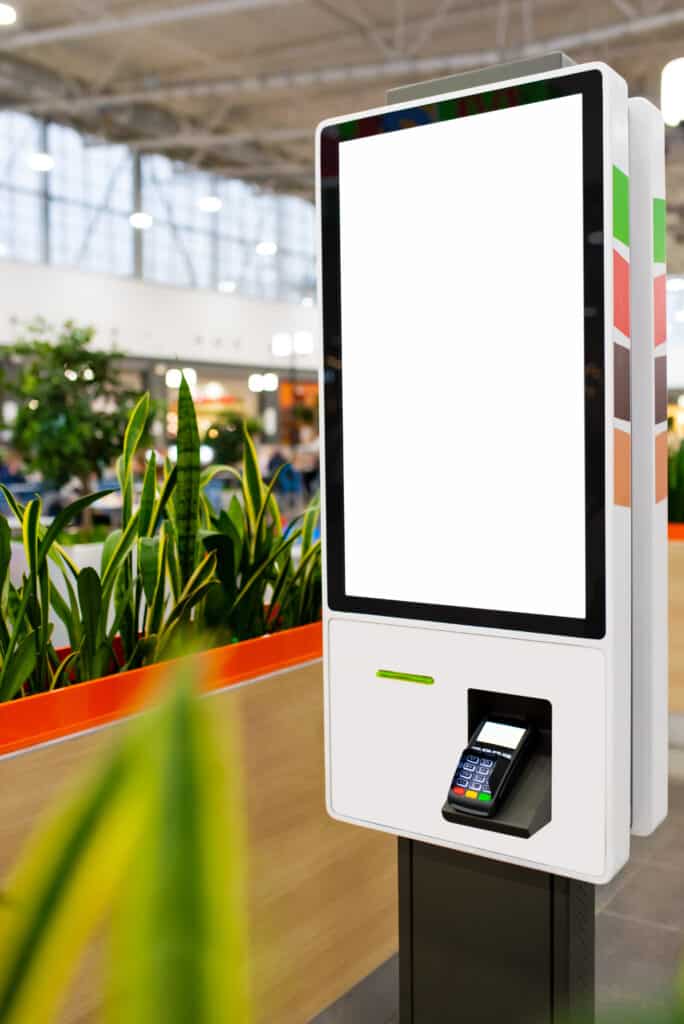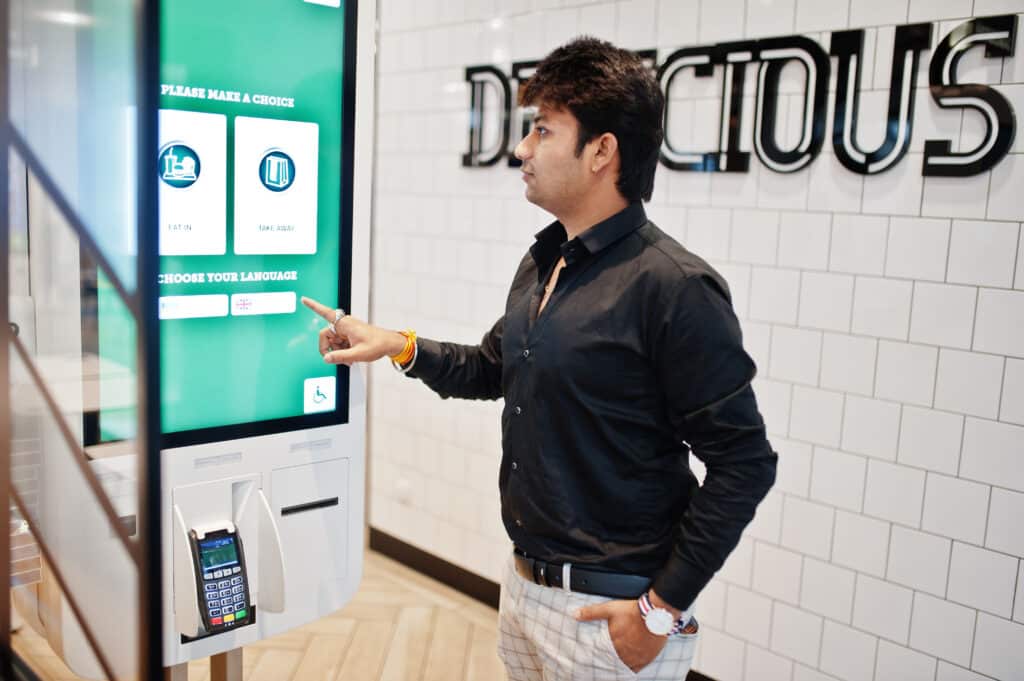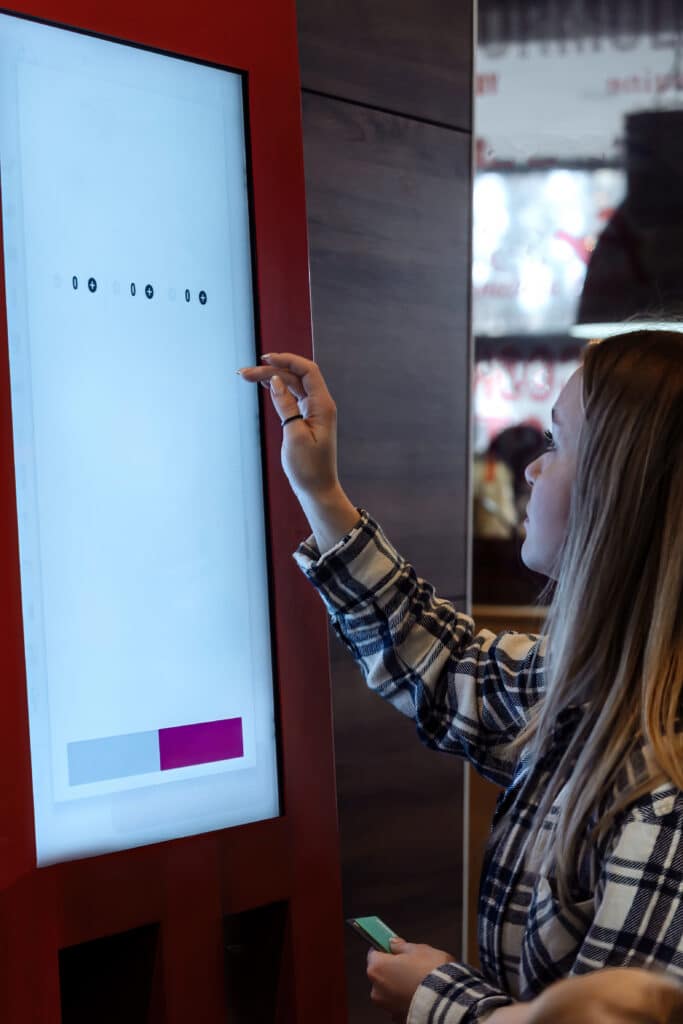Gone are the days of standing in long queues to place an order at your favorite restaurant. With the advent of self-service kiosks, dining out has taken on a whole new level of convenience and efficiency. These touchscreen wonders have revolutionized the restaurant industry, allowing customers to skip the wait and take charge of their own dining experience. From fast-food joints to upscale eateries, self-service kiosks are popping up everywhere, promising to streamline the ordering process and enhance customer satisfaction. In this article, we will explore how these technological marvels are reshaping the way we dine, providing insights into their benefits and potential challenges for both consumers and businesses alike.
The rise of self-service kiosks in restaurants
One of the biggest trends in the restaurant industry today is the rise of self-service kiosks. These innovative machines are popping up in all types of eateries, from fast food joints to high-end establishments. So, what’s driving this trend? It turns out that self-service kiosks offer a range of benefits for both customers and businesses alike.

For customers, self-service kiosks provide a level of convenience that is hard to match. No more waiting in long lines or struggling to get the attention of a busy waiter. With just a few taps on a screen, customers can quickly and easily place their orders and pay for their meals. And because the process is automated, there’s less room for errors or miscommunication.
But it’s not just customers who are benefiting from self-service kiosks – restaurants are seeing some major advantages as well. Higher order accuracy rates mean fewer mistakes in the kitchen, leading to happier customers and better reviews. Additionally, with less reliance on staff for taking orders and processing payments, restaurants can streamline operations and potentially save on labor costs. In fact, studies have shown that implementing self-service kiosks can lead to faster service times and increased revenue per customer visit.
Overall, it’s clear that self-service kiosks are shaping the future of dining experiences. As technology continues to advance, we can expect even more exciting developments in this space – perhaps including personalized recommendations based on previous orders or integrated loyalty programs.
Benefits of self-service kiosks for customers
Self-service kiosks have become increasingly popular in the restaurant industry, and for good reason. One of the key benefits of these kiosks for customers is reduced wait times. Instead of having to stand in line and wait for a server to take their order, customers can simply walk up to a self-service kiosk, choose their items, customize their orders, and pay—all within a matter of minutes. This not only saves time but also provides a more efficient dining experience.
Another major advantage of self-service kiosks is improved accuracy in ordering. With traditional waiter-based ordering systems, there is always room for human error. However, when customers choose their own items and input their preferences directly into a self-service kiosk, chances for mistakes are significantly reduced. Customers can easily select any modifications or dietary restrictions they may have without worrying about miscommunications or misunderstandings with the server.
Moreover, self-service kiosks empower customers to take control over their dining experience. They provide an opportunity for customers to explore the menu at their own pace, read detailed descriptions of each item, and make informed choices. Additionally, by eliminating the need for constant interaction with servers during the ordering process, individuals who may be shy or hesitant can feel more comfortable making requests or changes to their order without feeling rushed or judged.
Overall, self-service kiosks offer numerous benefits that enhance the customer’s dining experience: reduced wait times improve efficiency; increased accuracy in ordering eliminates mistakes; and empowerment through choice promotes customer satisfaction.
Increased efficiency and reduced labor costs
One of the major benefits of self-service kiosks in the restaurant industry is the increased efficiency they bring. Traditionally, customers would have to wait in line to place their orders and then wait again for their food to be prepared. With self-service kiosks, however, customers can simply walk up to a kiosk, select their desired items, customize their order if necessary, and pay all in one seamless process. This not only saves time for both customers and employees but also reduces bottlenecks at the front counter during peak hours.

In addition to improved efficiency, self-service kiosks also help reduce labor costs for restaurants. By allowing customers to order and pay through a machine, fewer staff members are needed at the front counter taking orders. Instead of allocating resources towards manual tasks like order taking, employees can focus on more customer-oriented roles such as food preparation or providing exceptional service. This redistribution of labor helps restaurants optimize staffing levels and potentially decrease overall operational costs.
Overall, self-service kiosks offer a win-win situation for both restaurants and customers by increasing efficiency while reducing labor costs. As technology continues to advance and consumers embrace new ways of dining out, it’s clear that self-service kiosks will play an increasingly important role in shaping the restaurant industry’s future.
Customization and order accuracy with self-service kiosks
In the past, when you ate out, you often had to settle for a meal that was almost what you wanted, but not quite perfect. But now, with self-service kiosks in restaurants, you have more control. These easy-to-use machines let you customize your order to fit your tastes and dietary needs. One of the best things about self-service kiosks is that they make sure your order is right. Since you enter your own order, there are fewer mistakes. This makes customers happier because they get exactly what they want, and it also helps the restaurant work more efficiently by reducing the time spent fixing mistakes.
These kiosks allow you to customize your meals. You can pick toppings, ingredients, and provide cooking instructions or specify allergen restrictions. No longer do you have to compromise on what you want. The kiosk gives you complete control over your dining experience. This blog section can be added to the larger article as an introduction or to support its main points.
Potential challenges and concerns with self-service kiosks
Kiosks are seen as a big change for restaurants, but there are problems that come with using them. One problem is that people might lose their jobs. If more restaurants start using self-service kiosks, there might not be a need for cashiers and waitstaff anymore. This could be a problem in cities where there aren’t many jobs already.

This makes people worry about how restaurants store and use this data, or if they share it with other companies for marketing. Protecting customer privacy is very important to build trust between customers and restaurants using these kiosks. Also, technical problems can be a big challenge when relying only on self-service kiosks to order. Like any technology, these machines can break or have connection problems, which can make people wait a long time or disrupt the service.
The future of self-service kiosks in the restaurant industry
Technology is advancing quickly, and self-service kiosks are becoming common in restaurants worldwide. These touchscreens let customers order and pay without talking to staff. But what’s next for self-service kiosks in restaurants? One big trend is customization. As more restaurants use these machines, they’ll probably create software that lets customers personalize their orders even more. People could pick toppings, ingredients, cooking methods, and portion sizes, giving them complete control over their meal.
Restaurants may soon integrate with artificial intelligence (AI). Picture going into a restaurant and seeing a self-service kiosk. An AI virtual assistant greets you and knows your preferences from previous visits or online orders. This personalized interaction improves customer experience and gives restaurants data to improve their offerings and marketing.
In conclusion, the future of self-service kiosks in the restaurant industry looks bright. Technology advancements are making it easier to customize and personalize things. AI integration can improve how businesses interact with customers. Self-service kiosks will be important for restaurants in the future because customers want more convenience and control over their dining experience.
Conclusion: The transformative impact of self-service kiosks
Self-service kiosks have changed the restaurant industry by revolutionizing how customers order and dine. These kiosks increase efficiency and reduce labor costs for businesses. They also give customers control over their ordering process, offering convenience and flexibility. Customers can personalize their orders, make changes easily, and avoid long wait times. Additionally, self-service kiosks provide valuable data for businesses. By tracking customer preferences, purchasing habits, and demographics, restaurants can improve their menu offerings, offer targeted promotions, and enhance customer satisfaction. This information is valuable for restaurant owners looking to stay competitive.
All in all, it is clear that self-service kiosks are reshaping the restaurant industry on multiple fronts. From streamlining operations to catering to individual consumer preferences while collecting valuable data insights – they offer a win-win situation for both businesses and customers alike.
